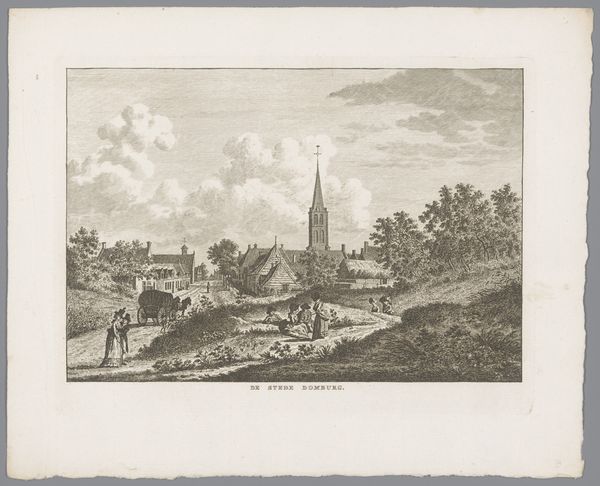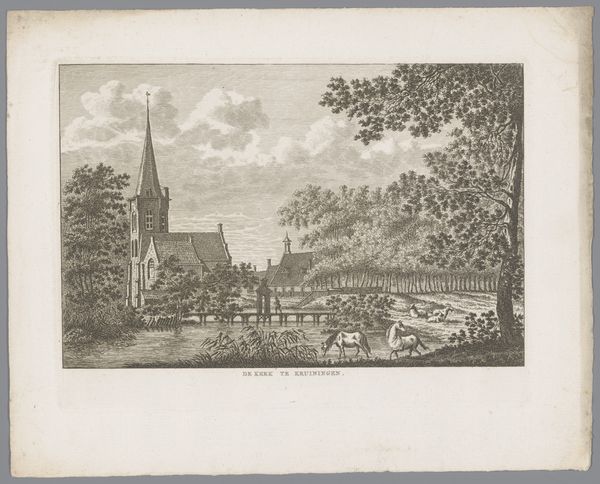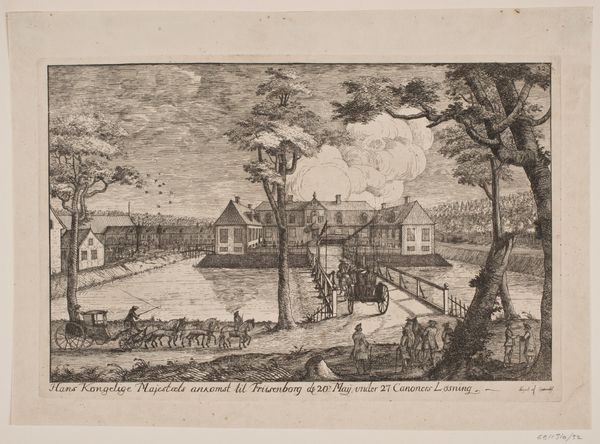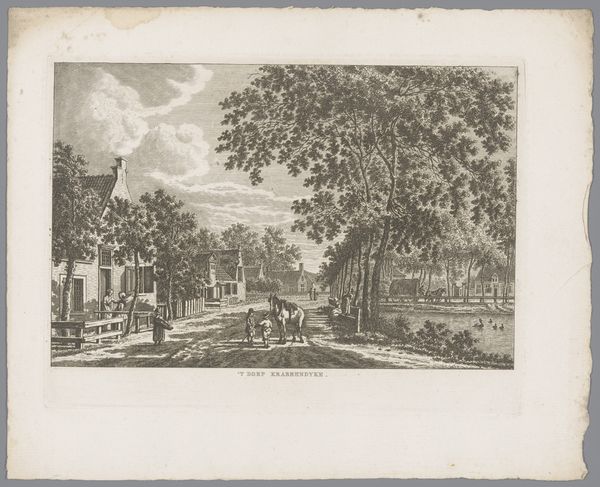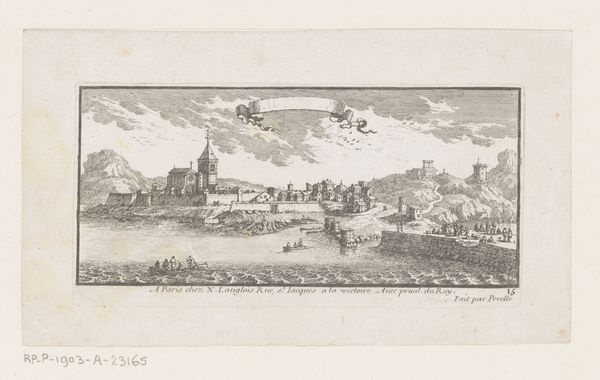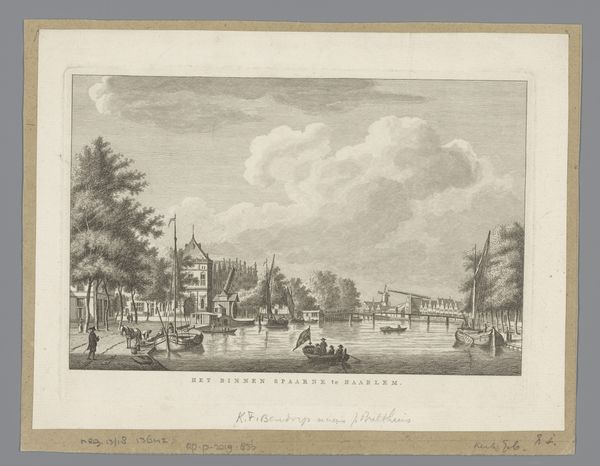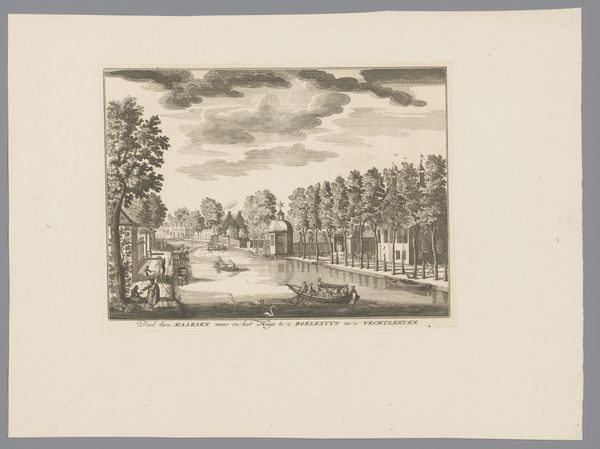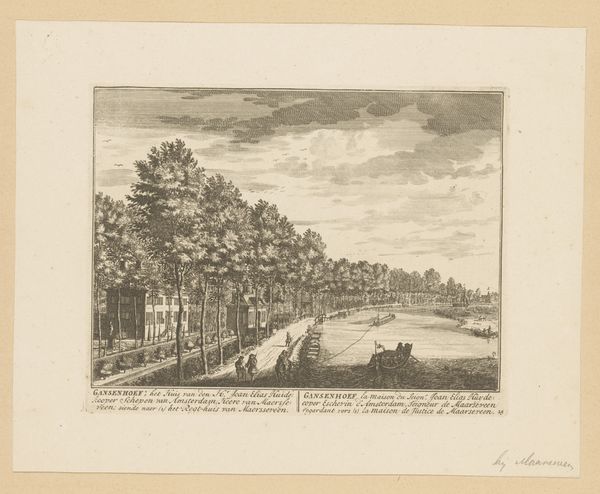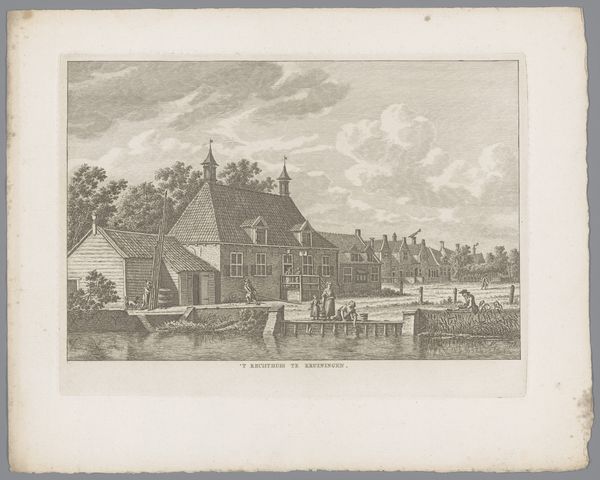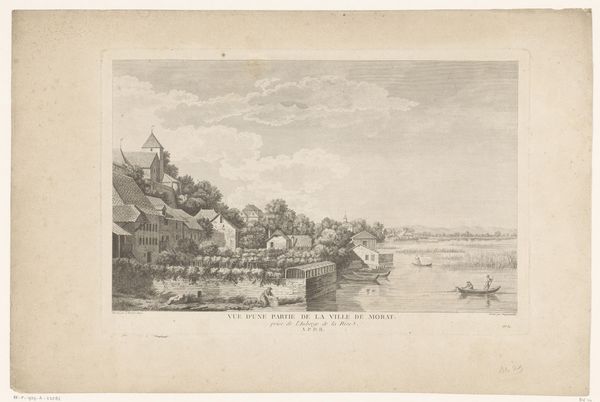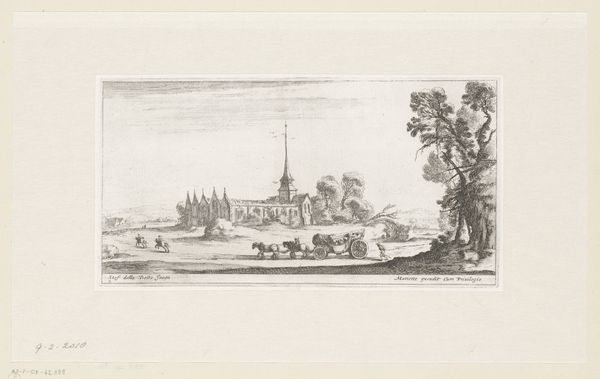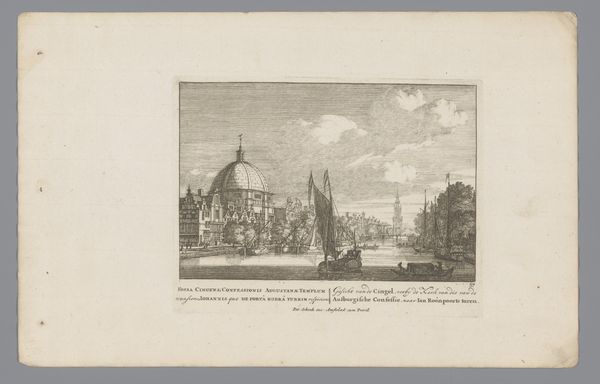
Gezicht op Burgwerd met Bolsward op de achtergrond 1786 - 1792
0:00
0:00
carelfrederikibendorp
Rijksmuseum
print, etching
#
neoclacissism
# print
#
etching
#
landscape
#
cityscape
#
genre-painting
Dimensions: height 175 mm, width 248 mm
Copyright: Rijks Museum: Open Domain
Editor: We're looking at Carel Frederik Bendorp's "View of Burgwerd with Bolsward in the Background", made between 1786 and 1792. It’s an etching, and it feels very serene and carefully constructed. The village feels small but also significant. What do you see in this piece, considering its historical moment? Curator: This print presents an interesting look at the late 18th-century Dutch countryside. It comes at a time when the Dutch Republic was declining, facing internal political struggles, but the art market thrived, which led artists like Bendorp to record local views for a consuming public. Consider the inscription. Doesn't that also imply something about art production? Editor: Definitely! I hadn't thought of that specifically. It's almost like he’s documenting a scene, offering a kind of objective view, as the Neoclassical movement seems to demand. The detailed landscape almost turns into a snapshot. Curator: Precisely! Look closely at how the etching technique creates that detailed, almost documentary, feel. What effect might this “snapshot” have on how people in that time viewed the countryside? It suggests both a yearning for an idealized rural past, which then influenced future urban planning. The genre-scene showing local residents provides the local population as an accessible, common experience. Editor: That's so interesting, it is a very accessible portrayal. I was focused on the image as just an aesthetic scene, but framing it as part of a broader social and political context really adds another layer to it. Curator: Context is everything, isn't it? By thinking about art's purpose within society, and the people consuming it, it helps bring works like these to life. I am still interested to consider how art created by elites and consumed by wider audiences would alter opinions or social policy. Editor: This makes me want to look at other landscapes from the period. Thanks for pointing out the connection between the visual representation and the bigger historical picture. I learned a lot.
Comments
No comments
Be the first to comment and join the conversation on the ultimate creative platform.
